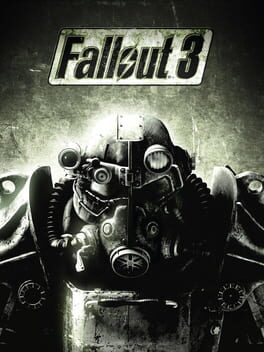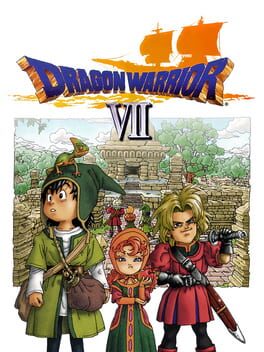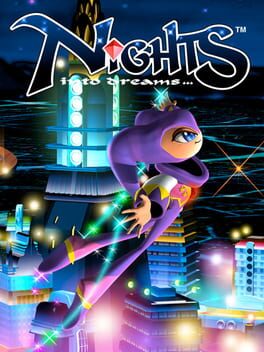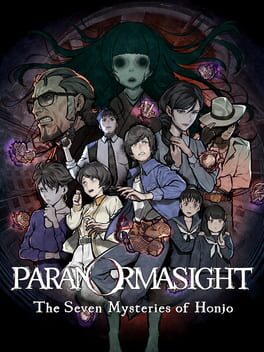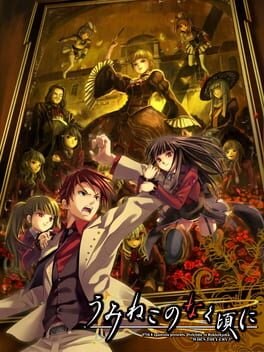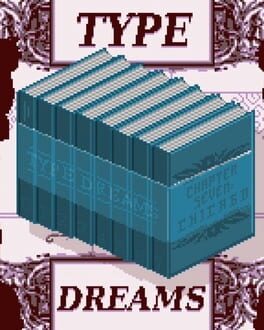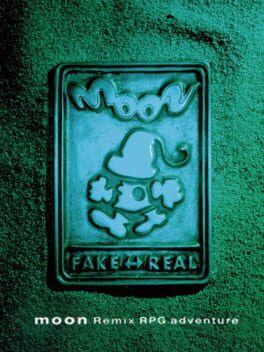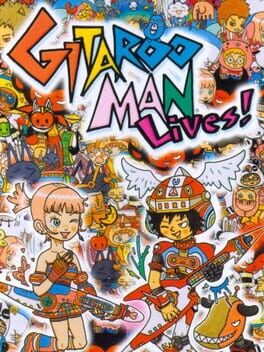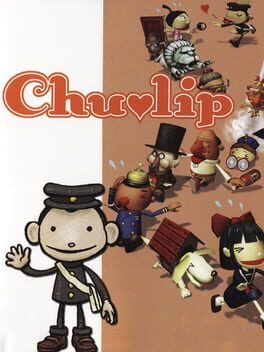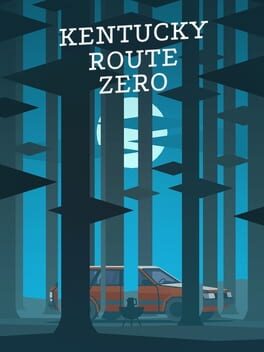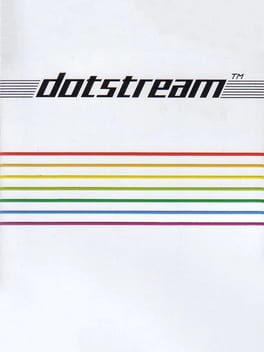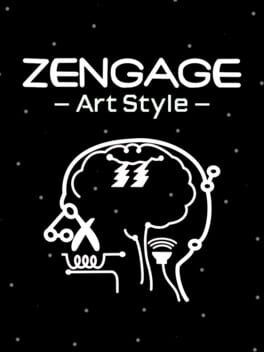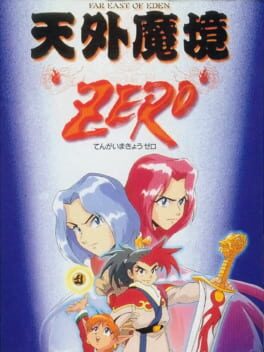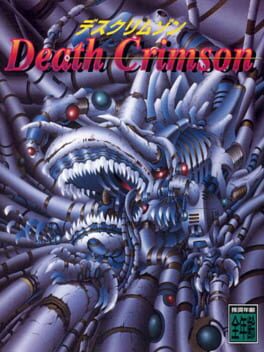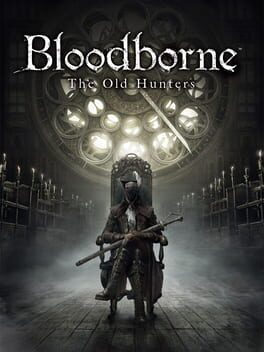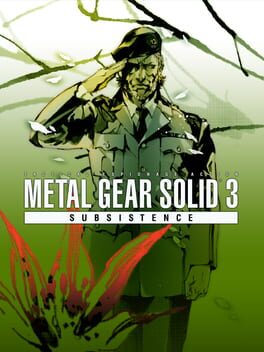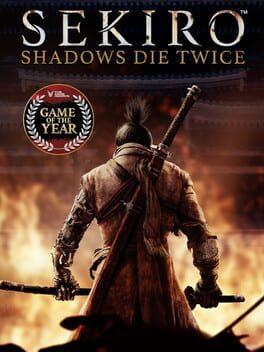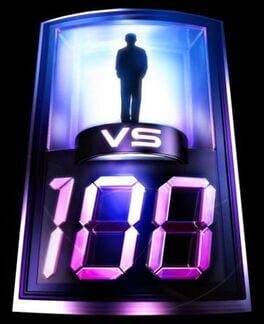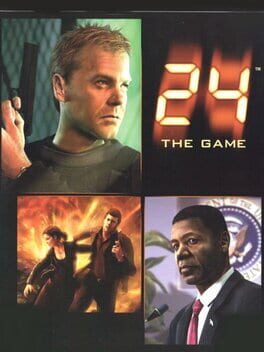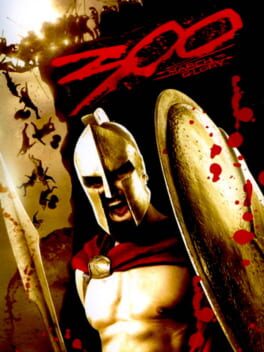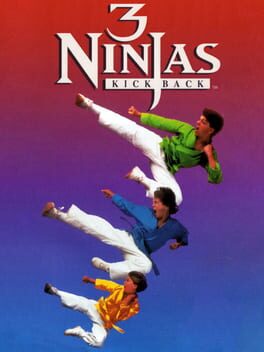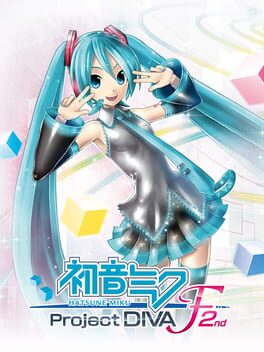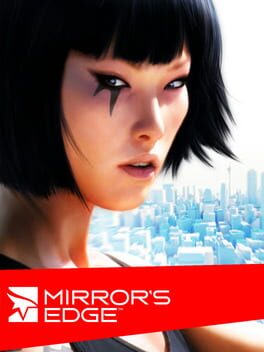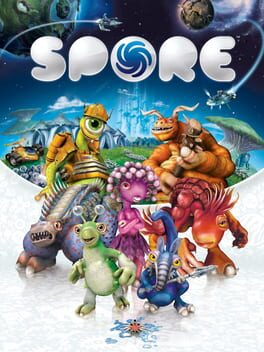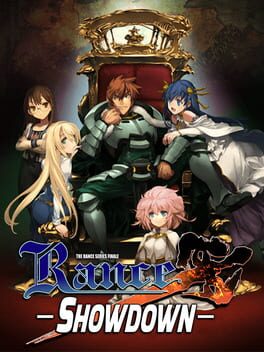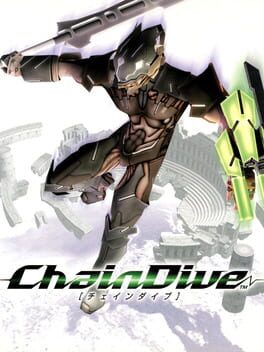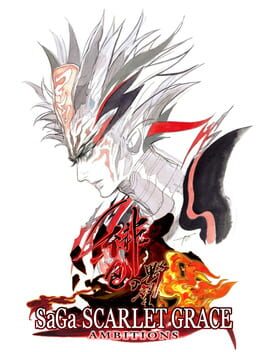SnowSignal
709 reviews liked by SnowSignal
Venus Meets Venus
2014
Control Valve Companion
CW: Transphobic Discourse, Bad Relationships, Alcoholism, Brief Mention of Suicidal Ideation
Venus Meets Venus (2014) is interesting in the fact that it feels like such a specific cultural object from 10 years ago. It's interfacing with a greasy and failed relationship of a cis lesbian dating a transwoman, 10 years ago. Basically in a time period where talking about that stuff was still out of bounds. Shockingly its hard to believe this, but for transwomen being spoken of in a large cultural group as these 'objects to have strong opinions on' didn't really catalyze until about 3 years ago with J.K. Rowling posting her (J.K. Rowling Writes about Her Reasons for Speaking out on Sex and Gender Issues) [https://www.jkrowling.com/opinions/j-k-rowling-writes-about-her-reasons-for-speaking-out-on-sex-and-gender-issues/] (2020) essay.
So this whole discussion is a major sidebar but hear me out before you skip this paragraph. The important thing you have to know here is that even me interfacing with this post now would be dumb if we are just talking about Rowling and what shes doing. Sadly¹ the best reference point to make that point is that of a youtube video by detailed independent journalist Shaun over in the video "JK Rowling's New Friends" (2023) in which among lots of other things he points out that Rowling has some fairly extreme ties to the gender critical movement and the ways in which shes shaking hands with ultra conservative figures and supporting their desires to see shelters for trans people actively closed down. In most ways this concern trolling about Rowling being 'maybe not the worst for saying what she said' is completely out of date by design, and Shauns coverage in general points that out. Most news coverage is not like 'hey its no longer about what these people are saying, but what they are doing' because transphobia gets more clicks. This is not just Rowling specific by the way, there was a similar issue going on with the treatment of Dave Chappelle actually. Chappelle has been getting that similar concern trolling treatment all throughout the bookending of his own transphobic specials, which as you know pulled the Netflix development team into striking for a while, all the up to his most recent special. I don't even think its worth either of our time for me to go and find the name of those specials and talk that stuff out, because Chappelle being bad about trans people is literally not that important (and I'm saying this as a transfemme). You know what is important? When the dude threatened to block a housing proposal at a local commitee by pulling out a lot of money. That's actual horrifying news but that doesn't get clicks! It's the biggest deal about Chappelle to me, and a blip on most peoples radar. This is the problem, for most people everything exists on the level of a few words said wrong and not on the level of actually bad stuff happening.
This is what I mean, most of this stuff I just mentioned is literally out of date in the sense that a metric fuckton of cultural movement and politics has been happening even since then. It's only been Three Years since that particular event, and if your trans like me this probably comes as a shock, for us with all the stuff going on it feels like 10. So I can't sit here and show you all the awful shit going on in the world with that. That has to be something you learn about somewhere else, not from a random post on a wimpering social media website like this. But importantly, it puts into context why Venus Meets Venus is as culturally important as it is, its from 2014. The dynamics were more innocent, and most people thought that the only 2 things trans people were worried about was the trans panic defense and online TERFs. Even here Venus Meets Venus functions as a fracturing point actually and a rather important one, it illustrates through being so well written that relationship issues are a huge problem to. Even then we had a lot of terrible stuff we were dealing with, but we didn't really know about it like, statistically or whatever.
See the more 'economic' side of this was uncovered in "He Fucked the Girl Out of Me" (2022, Talyor McCue) which needed a bunch of statistics about how transfemmes have the harshest wage gap of any gender group we have census data on, and the trans panic defense needed to wear off a bit. Back in 2014 we just had 'feelings', really sapphic and confusing feelings about 'others'. If Venus Meets Venus shows anything then, its that through the thoroughness of its prose and broken bar relationship that being a 'good ally' is not being a good person in a relationship. There's a very profound passage where the main character asks her partner if she wants to go to the trans march, and she politely declines. It immediately becomes this prodding 'why' moment, you went to the dyke march after all and frusteratingly as a reader you're never given a 'good' reason as to why not. What would it have been? She passes, does she not want other trans people to see her as clocky? Does she not want to be 'seen'? Is she worried that she might be murdered by police or something? You're not really given an answer, nowadays she might have had one, but in that time period, in 2014, no was just all there was unless you were especially educated about the windows being broken and I mean come on, I was out in 2014 and the main thing I was thinking about with my crush on a homeless transfemme. Coercing your girlfriend into doing stuff they doing want to do, and pecking them into activism for their minority group more is not ok, and through the main narrator you learn that. It hits like a truck.
Thus in a beautifully put way you learn one of the most important struggles that LGBT people face: we are made the victim fairly often of other peoples maladaptive enthusiasm and have to watch ourselves about falling into it with each other. Maladaptive enthusiasm is the main theme of the work, and it hits like a truck. For me if I had to describe it, its basically the concept of loving somebody through your desire to 'help them out' and get them out of a rough spot. You other them as an object of political desire rather than romantic thoroughness. A desire for active and continuous solidarity that can rather franticly overwrite your other emotions and desires. For instance I had an extreme crush on my now transmother who was going through a housing crises at one point. I get her some basic nessecities from CVS once and shipped it to her, and obviously it put me in an emotional spot where my crush on her was getting toxic and out of hand. I was messaging her constantly to make sure she was ok, would actively tell her my worst intrusive thoughts, etc. which catalyzed into an event where I upset her by saying I was thinking about offing myself (this is years ago, I'm fine now). Demanding an intense emotional care from somebody who was in no place to give that. Soon after that happened, I realized I was trans myself and thats how I came out. This is actually the most chill version of this I can publicly talk about, in part because we have such a powerful and loving relationship now without the need for active check ups. This didn't happen immediately. I had to go take a year smoke break with myself and take a really long look in the mirror.
This acts then as the ultimate criticism of the piece. You can hurt people and have a point of healing happen with them later on, but the way this work frames that is as something that happens over a single night with a wine bottle and some tears. But especially once you do something outrageously hurtful (as is revealed in this text) you can't just cry it away. You need to take inventory of yourself and walk it off for a year or two. It's on this same note that I want to say that I'm not that far from becoming other peoples political projects rather than just as a person with some demons I'm fighting. For instance I tell most when I first meet them that I'm a transwoman, but I keep the fact that I'm plural and an alcoholic behind the teeth. Especially that second one. Because the moment people hear stuff like that they feel catalyzed to make a decision 'about me'.
Do I make this person my 'project' or do I discard this person as a result of these factors being 'too demanding' to put up with. Yet, I do everything in my power when these facts come up not to make it other peoples issues. This work operates as a tragic example of how barrelling into this way of thinking about us does us a disservice and dehumanizes us and allows you to act more vile. I would say this is a very necessary warning story, with an albeit awkward reunion note I don't agree with, and since it depicts a time in which trans people weren't a constant fox news paranoia, its actually worth playing through at some point despite this blunder.
Recently I've been opening up to people in the city I live about these other facts, and they still proceed with love in their hearts towards me with adjacency and not active doting. This powerful form of love, a love via adjacency, is likely necessary in order to build healthy relationships with people. I think we should help each other, but the political projects should happen on the street level, and not through courting. Highly recommended work of fiction, and extremely empowering to the concept that relationships for LGBT people can start out normal, but if you can overcome the occasional edginess of this text (for instance the 'counting chapter narration openers' for each section) there's a powerful few things to gauge from underneath. In a way, I think this text is a lot less about queer mistreatment, and a lot more about how bar romance seem to be the mecca for maladaptive enthusiasm, and even if you don't find time to play it (its only about a half hour read), it's best to try and actively keep suspicion of that pronged understanding of others in your life. Communicate your barriers and take inventory of your emotions when you can. Don't toss people away just because they have 'problems' c:
CW: Transphobic Discourse, Bad Relationships, Alcoholism, Brief Mention of Suicidal Ideation
Venus Meets Venus (2014) is interesting in the fact that it feels like such a specific cultural object from 10 years ago. It's interfacing with a greasy and failed relationship of a cis lesbian dating a transwoman, 10 years ago. Basically in a time period where talking about that stuff was still out of bounds. Shockingly its hard to believe this, but for transwomen being spoken of in a large cultural group as these 'objects to have strong opinions on' didn't really catalyze until about 3 years ago with J.K. Rowling posting her (J.K. Rowling Writes about Her Reasons for Speaking out on Sex and Gender Issues) [https://www.jkrowling.com/opinions/j-k-rowling-writes-about-her-reasons-for-speaking-out-on-sex-and-gender-issues/] (2020) essay.
So this whole discussion is a major sidebar but hear me out before you skip this paragraph. The important thing you have to know here is that even me interfacing with this post now would be dumb if we are just talking about Rowling and what shes doing. Sadly¹ the best reference point to make that point is that of a youtube video by detailed independent journalist Shaun over in the video "JK Rowling's New Friends" (2023) in which among lots of other things he points out that Rowling has some fairly extreme ties to the gender critical movement and the ways in which shes shaking hands with ultra conservative figures and supporting their desires to see shelters for trans people actively closed down. In most ways this concern trolling about Rowling being 'maybe not the worst for saying what she said' is completely out of date by design, and Shauns coverage in general points that out. Most news coverage is not like 'hey its no longer about what these people are saying, but what they are doing' because transphobia gets more clicks. This is not just Rowling specific by the way, there was a similar issue going on with the treatment of Dave Chappelle actually. Chappelle has been getting that similar concern trolling treatment all throughout the bookending of his own transphobic specials, which as you know pulled the Netflix development team into striking for a while, all the up to his most recent special. I don't even think its worth either of our time for me to go and find the name of those specials and talk that stuff out, because Chappelle being bad about trans people is literally not that important (and I'm saying this as a transfemme). You know what is important? When the dude threatened to block a housing proposal at a local commitee by pulling out a lot of money. That's actual horrifying news but that doesn't get clicks! It's the biggest deal about Chappelle to me, and a blip on most peoples radar. This is the problem, for most people everything exists on the level of a few words said wrong and not on the level of actually bad stuff happening.
This is what I mean, most of this stuff I just mentioned is literally out of date in the sense that a metric fuckton of cultural movement and politics has been happening even since then. It's only been Three Years since that particular event, and if your trans like me this probably comes as a shock, for us with all the stuff going on it feels like 10. So I can't sit here and show you all the awful shit going on in the world with that. That has to be something you learn about somewhere else, not from a random post on a wimpering social media website like this. But importantly, it puts into context why Venus Meets Venus is as culturally important as it is, its from 2014. The dynamics were more innocent, and most people thought that the only 2 things trans people were worried about was the trans panic defense and online TERFs. Even here Venus Meets Venus functions as a fracturing point actually and a rather important one, it illustrates through being so well written that relationship issues are a huge problem to. Even then we had a lot of terrible stuff we were dealing with, but we didn't really know about it like, statistically or whatever.
See the more 'economic' side of this was uncovered in "He Fucked the Girl Out of Me" (2022, Talyor McCue) which needed a bunch of statistics about how transfemmes have the harshest wage gap of any gender group we have census data on, and the trans panic defense needed to wear off a bit. Back in 2014 we just had 'feelings', really sapphic and confusing feelings about 'others'. If Venus Meets Venus shows anything then, its that through the thoroughness of its prose and broken bar relationship that being a 'good ally' is not being a good person in a relationship. There's a very profound passage where the main character asks her partner if she wants to go to the trans march, and she politely declines. It immediately becomes this prodding 'why' moment, you went to the dyke march after all and frusteratingly as a reader you're never given a 'good' reason as to why not. What would it have been? She passes, does she not want other trans people to see her as clocky? Does she not want to be 'seen'? Is she worried that she might be murdered by police or something? You're not really given an answer, nowadays she might have had one, but in that time period, in 2014, no was just all there was unless you were especially educated about the windows being broken and I mean come on, I was out in 2014 and the main thing I was thinking about with my crush on a homeless transfemme. Coercing your girlfriend into doing stuff they doing want to do, and pecking them into activism for their minority group more is not ok, and through the main narrator you learn that. It hits like a truck.
Thus in a beautifully put way you learn one of the most important struggles that LGBT people face: we are made the victim fairly often of other peoples maladaptive enthusiasm and have to watch ourselves about falling into it with each other. Maladaptive enthusiasm is the main theme of the work, and it hits like a truck. For me if I had to describe it, its basically the concept of loving somebody through your desire to 'help them out' and get them out of a rough spot. You other them as an object of political desire rather than romantic thoroughness. A desire for active and continuous solidarity that can rather franticly overwrite your other emotions and desires. For instance I had an extreme crush on my now transmother who was going through a housing crises at one point. I get her some basic nessecities from CVS once and shipped it to her, and obviously it put me in an emotional spot where my crush on her was getting toxic and out of hand. I was messaging her constantly to make sure she was ok, would actively tell her my worst intrusive thoughts, etc. which catalyzed into an event where I upset her by saying I was thinking about offing myself (this is years ago, I'm fine now). Demanding an intense emotional care from somebody who was in no place to give that. Soon after that happened, I realized I was trans myself and thats how I came out. This is actually the most chill version of this I can publicly talk about, in part because we have such a powerful and loving relationship now without the need for active check ups. This didn't happen immediately. I had to go take a year smoke break with myself and take a really long look in the mirror.
This acts then as the ultimate criticism of the piece. You can hurt people and have a point of healing happen with them later on, but the way this work frames that is as something that happens over a single night with a wine bottle and some tears. But especially once you do something outrageously hurtful (as is revealed in this text) you can't just cry it away. You need to take inventory of yourself and walk it off for a year or two. It's on this same note that I want to say that I'm not that far from becoming other peoples political projects rather than just as a person with some demons I'm fighting. For instance I tell most when I first meet them that I'm a transwoman, but I keep the fact that I'm plural and an alcoholic behind the teeth. Especially that second one. Because the moment people hear stuff like that they feel catalyzed to make a decision 'about me'.
Do I make this person my 'project' or do I discard this person as a result of these factors being 'too demanding' to put up with. Yet, I do everything in my power when these facts come up not to make it other peoples issues. This work operates as a tragic example of how barrelling into this way of thinking about us does us a disservice and dehumanizes us and allows you to act more vile. I would say this is a very necessary warning story, with an albeit awkward reunion note I don't agree with, and since it depicts a time in which trans people weren't a constant fox news paranoia, its actually worth playing through at some point despite this blunder.
Recently I've been opening up to people in the city I live about these other facts, and they still proceed with love in their hearts towards me with adjacency and not active doting. This powerful form of love, a love via adjacency, is likely necessary in order to build healthy relationships with people. I think we should help each other, but the political projects should happen on the street level, and not through courting. Highly recommended work of fiction, and extremely empowering to the concept that relationships for LGBT people can start out normal, but if you can overcome the occasional edginess of this text (for instance the 'counting chapter narration openers' for each section) there's a powerful few things to gauge from underneath. In a way, I think this text is a lot less about queer mistreatment, and a lot more about how bar romance seem to be the mecca for maladaptive enthusiasm, and even if you don't find time to play it (its only about a half hour read), it's best to try and actively keep suspicion of that pronged understanding of others in your life. Communicate your barriers and take inventory of your emotions when you can. Don't toss people away just because they have 'problems' c:
Fallout 3
2008
One of the worse Fallout games, the surest sign of the irrevocable decline of the RPG as genre, Oblivion with guns, one of Bethesda's finest efforts. In my view, this is a game limited not by its shoddy execution but by its puny ambitions. Take the much maligned morality system of the game: will you defuse the bomb or nuke Megaton? The choice is mocked because the choice is obvious but enough is enough, let's be professional adults who do not condescend to professional adults: does anyone, perched atop some dilapidated hotel tower with a scenic view of the explosion REALLY think Todd Howard and company believed this was a grave moral quandary? It is so clearly not meant to be a dilemma. The point of the choice - the point of Fallout 3, to its ultimate detriment - is not to make you ponder good and evil but to give you the freedom to embrace extremes. In so being, the mutation is complete. The feint of fun in the original Fallout that gave way to a muted, omnipresent sadness has become the blatant substance of it all - post-apocalypse as playground.
It is within those unfortunate parameters that Fallout 3 can be considered a good time. The same way it was never meant to have you consider the weight of your actions, it was never meant for you to consider the weight of your gun. Comedically light, almost ornamental gunplay, interrupted anytime by the bored or thwarted player who pauses the flow of time to save time and find the next interesting attraction of the radioactive theme park. Fallout 3 pays homage to the shooter the same way it pays homage to the RPG, and arrives at something both lesser and special - it's the Bethesda guarantee. With the long-deserved revelations, reckonings, and admissions of Bethesda's myriad failures in our collective past, we can perhaps afford to be a little generous to this and Skyim, the supreme balancing acts between Bethesda's genre-skimming, aesthetic-appropriating, rigorously shallow method and the studio's mysteriously unprecedented and unmatched open world entertainment. Fallout 3 would be followed by New Vegas, 4, and 76, all of which made radical changes to 3 while keeping its true, solid, and generally underappreciated fundamentals: VATS, open world, diminished 1st person shooter, modified WRPGs. Influence or infection? That is each person's lot to decide, but both RPG Codex and Reddit can perhaps agree on this: in retrospect, this was the irreversible turning point, our last chance to be mindless before it came time to pay mind to how good and how bad things could be. This was the nuke of the Fallout franchise.
It is within those unfortunate parameters that Fallout 3 can be considered a good time. The same way it was never meant to have you consider the weight of your actions, it was never meant for you to consider the weight of your gun. Comedically light, almost ornamental gunplay, interrupted anytime by the bored or thwarted player who pauses the flow of time to save time and find the next interesting attraction of the radioactive theme park. Fallout 3 pays homage to the shooter the same way it pays homage to the RPG, and arrives at something both lesser and special - it's the Bethesda guarantee. With the long-deserved revelations, reckonings, and admissions of Bethesda's myriad failures in our collective past, we can perhaps afford to be a little generous to this and Skyim, the supreme balancing acts between Bethesda's genre-skimming, aesthetic-appropriating, rigorously shallow method and the studio's mysteriously unprecedented and unmatched open world entertainment. Fallout 3 would be followed by New Vegas, 4, and 76, all of which made radical changes to 3 while keeping its true, solid, and generally underappreciated fundamentals: VATS, open world, diminished 1st person shooter, modified WRPGs. Influence or infection? That is each person's lot to decide, but both RPG Codex and Reddit can perhaps agree on this: in retrospect, this was the irreversible turning point, our last chance to be mindless before it came time to pay mind to how good and how bad things could be. This was the nuke of the Fallout franchise.
Fallout: New Vegas
2010
In twenty or thirty years, if the world's still around by then, I strongly suspect that Bethesda RPGs will exist in that particular space where those of us who lived through them insist to a skeptical audience of video game history enthusiasts how important they were. "You have to understand," we'll say, "I know they're unbelievably glitchy and they play like a bicycle with hexagonal wheels, but these were huge. EVERYONE played these." For all their flaws, these games defined a particular ideal of gaming experience not so much by what they were as by what they aspired (and inevitably failed) to be.
Of course, New Vegas isn't a Bethesda game. It was developed by Obsidian Entertainment and it has a distinctly different design sensibility. At the same time, it clearly is a Bethesda game: the expectations created by Fallout 3 and the constraints imposed by the engine itself make the moment-to-moment experience of playing much more alike its siblings than it is different. And so it exists in the liminal space of the cover artist, stuck with a song but still given the freedom to put their own spin on it.
New Vegas's spin is grand political struggle. Although other Bethesda games have their obligatory world-altering main quests, none extend so deeply through the vast game world or make it seem so much like a real place where real people are struggling with and against one another to make the best of a bad situation. The way it seeks to breathe life into the Mojave Wasteland is the heart of what sets New Vegas apart. Proper Bethesda games grasp desperately at an ideal of "realism" defined by interactive stuff: in the real world you go anywhere, talk to anyone, and touch anything you see, so the most realistic games must be huge maps littered with stuff you can pick up and people who will talk to you about arrows and knees.
My friend Bret and I call this approach "lumpy realism", after the mountain of discrete objects it engenders. And while New Vegas is beholden to lumpiness, it's mostly a trapping of its ancestry. It's more interested in what I'll call "decisive realism", the promise that the choices you make as a player matter in some deep sense. This is still an ideal whose shortcomings will always show the seams of artificiality, but it's also one that makes space for writing and plotting, the unsung heroes of the RPG genre.
For my money though, the most interesting thing about New Vegas is less what it tries to do and more the negative space left behind by what it doesn't try to do. Because it's less interested in leaving interactive stuff all over the place (and possibly because of development time constraints), it has a number of places that just exist. They're not part of a quest, they don't have lore, they're not meaningfully interactive in any way. They're just spaces and models and textures that exist for you to be near and look at. That's a sort of realism too, even if it's not intentional. After all, even though I could interact with anything in the world, in reality, I usually choose to just take it in.
Of course, New Vegas isn't a Bethesda game. It was developed by Obsidian Entertainment and it has a distinctly different design sensibility. At the same time, it clearly is a Bethesda game: the expectations created by Fallout 3 and the constraints imposed by the engine itself make the moment-to-moment experience of playing much more alike its siblings than it is different. And so it exists in the liminal space of the cover artist, stuck with a song but still given the freedom to put their own spin on it.
New Vegas's spin is grand political struggle. Although other Bethesda games have their obligatory world-altering main quests, none extend so deeply through the vast game world or make it seem so much like a real place where real people are struggling with and against one another to make the best of a bad situation. The way it seeks to breathe life into the Mojave Wasteland is the heart of what sets New Vegas apart. Proper Bethesda games grasp desperately at an ideal of "realism" defined by interactive stuff: in the real world you go anywhere, talk to anyone, and touch anything you see, so the most realistic games must be huge maps littered with stuff you can pick up and people who will talk to you about arrows and knees.
My friend Bret and I call this approach "lumpy realism", after the mountain of discrete objects it engenders. And while New Vegas is beholden to lumpiness, it's mostly a trapping of its ancestry. It's more interested in what I'll call "decisive realism", the promise that the choices you make as a player matter in some deep sense. This is still an ideal whose shortcomings will always show the seams of artificiality, but it's also one that makes space for writing and plotting, the unsung heroes of the RPG genre.
For my money though, the most interesting thing about New Vegas is less what it tries to do and more the negative space left behind by what it doesn't try to do. Because it's less interested in leaving interactive stuff all over the place (and possibly because of development time constraints), it has a number of places that just exist. They're not part of a quest, they don't have lore, they're not meaningfully interactive in any way. They're just spaces and models and textures that exist for you to be near and look at. That's a sort of realism too, even if it's not intentional. After all, even though I could interact with anything in the world, in reality, I usually choose to just take it in.
Dragon Warrior VII
2000
Final Fantasy VII
1997
this game still kicks ass supreme but it's weird revisiting and getting to domestic abuser Cid. you go from Barret being betrayed and losing an arm and Cloud's identity crisis, serious stakes in the world of the story but tonally light as a player, to Cid abusing the shit out of a woman for decades because she saved his life and she's so broken from him that she thinks she deserves it. fuck this guy get him AWAY from her!!!!! it's just a bit jarring, tonally, going from this morally-dark abuser party member to ex-wifeguy vampire Vincent, Sephiroth's goth step-dad.
Final Fantasy VII
1997
Fuck it, I wrote a loooong review where I went into great detail about how this is probably the most well-paced and constructed JRPG of all time and how it's also one of the most life-affirming works in the medium; where the final Omnislash against Sephiroth and how we the Player have to enact it is a perfect extension to us the Player of Cloud's arc about believing that he is (we are) enough, that the attempt to be as good as someone else, that we're not even worthy of being alive, is folly and that its thematic concerns of life and death are some of the most well-drawn in any work of fiction, but unfortunately I accidently deleted that review (somehow) in trying to edit it, so instead I will just relate one of my major points from that essay, what I was able to save, here instead:
This is far and away the most well-paced and structured video game of all time (which makes it all the more astonishing that Kazushige Nojima would go on to ditch all that nonsense like thematic and structural cohesion for Final Fantasy VIII, itself very under-rated if flawed), to the point that every single story-beat is firmly ingrained into my memory. What assists this sense of cohesion is the flow of gameplay from one pre-rendered background to another. Final Fantasy VIII is a gorgeous game, however when you compare its visual structure to that of VII's it becomes obvious which is the superior title. The expanded visual scope of VIII lends itself to having a lot of more-or-less useless and or uninteresting environments and transitional sections connecting the more memorable scenes. I could not for the life of me tell you how the various dungeons and story moments of VIII relate to each other beat-by-beat unless I were to do several more playthroughs, whereas with VII I could do so only after two full playthroughs. There are lots of straight-forward hallways and pathways and VIII is definitely a less vertically-focused game than VII, which means less finnicky movement across those backgrounds, but the focus on panning across environments means that there's less visual conciseness in VIII than in VII, as well as less emotional depth per scene.
What I mean by this is take, for example, the transition between the shots of the lab beneath Shinra Mansion and the dutch-angled hallway. Upon entering we're presented with an objective view of the space, overhead angle, and with the way the scene is lit our eyes are drawn to the light fixture hanging above the frame. It's set just to the point to where we can make out a brick pathway beneath it, and with the positioning of the bookshelves we subconsciously expect a hallway; thus we move toward it. With the transition into the dutch angle shot, we're immediately thrust into a subjective position alongside Cloud. This is emphasized by the vanishing point constructed by the shelves pointing toward Sephiroth the first two times we visit the area. This oscillation between objectivity and subjectivity feeds into the thematic focus of the entire game, and the mixture of tones infused by these two types of framings lends an emotional resonance that brands our understanding of the space that the designers then mine for emotional/narrative purpose upon us learning of Cloud's true background. Whereas with VIII our understanding of a space is relative only to our momentary attachment to it as a game-space (i.e dungeon, town, etc), VII uses the revisitation of environments as a way of relating to us that the world of Final Fantasy VII is truly a world, dense with echoing emotions and historical weight.
This is far and away the most well-paced and structured video game of all time (which makes it all the more astonishing that Kazushige Nojima would go on to ditch all that nonsense like thematic and structural cohesion for Final Fantasy VIII, itself very under-rated if flawed), to the point that every single story-beat is firmly ingrained into my memory. What assists this sense of cohesion is the flow of gameplay from one pre-rendered background to another. Final Fantasy VIII is a gorgeous game, however when you compare its visual structure to that of VII's it becomes obvious which is the superior title. The expanded visual scope of VIII lends itself to having a lot of more-or-less useless and or uninteresting environments and transitional sections connecting the more memorable scenes. I could not for the life of me tell you how the various dungeons and story moments of VIII relate to each other beat-by-beat unless I were to do several more playthroughs, whereas with VII I could do so only after two full playthroughs. There are lots of straight-forward hallways and pathways and VIII is definitely a less vertically-focused game than VII, which means less finnicky movement across those backgrounds, but the focus on panning across environments means that there's less visual conciseness in VIII than in VII, as well as less emotional depth per scene.
What I mean by this is take, for example, the transition between the shots of the lab beneath Shinra Mansion and the dutch-angled hallway. Upon entering we're presented with an objective view of the space, overhead angle, and with the way the scene is lit our eyes are drawn to the light fixture hanging above the frame. It's set just to the point to where we can make out a brick pathway beneath it, and with the positioning of the bookshelves we subconsciously expect a hallway; thus we move toward it. With the transition into the dutch angle shot, we're immediately thrust into a subjective position alongside Cloud. This is emphasized by the vanishing point constructed by the shelves pointing toward Sephiroth the first two times we visit the area. This oscillation between objectivity and subjectivity feeds into the thematic focus of the entire game, and the mixture of tones infused by these two types of framings lends an emotional resonance that brands our understanding of the space that the designers then mine for emotional/narrative purpose upon us learning of Cloud's true background. Whereas with VIII our understanding of a space is relative only to our momentary attachment to it as a game-space (i.e dungeon, town, etc), VII uses the revisitation of environments as a way of relating to us that the world of Final Fantasy VII is truly a world, dense with echoing emotions and historical weight.
‘In those dreams, I loved one woman... No matter the day, no matter the era…’
My adolescence was marked by the exploration of video games and RPGs already had the strongest attraction over me. There was an evocative quality to them that made them convenient getaways, places of reverie and poetic fables. Final Fantasy VI (1994) was certainly the first big shock of that time: in this universe torn between magic and technology, the adventures of this peculiar company resonated with me and I still consider Celes to be one of the characters dearest to my heart. Many other games have punctuated these adventures in those fictional lands, but Xenogears (1998) holds a rather distinctive place.
Final Fantasy VII (1997) didn't have any of the much-vaunted charm on me, certainly because it wasn't the story I needed, probably because the characters didn't speak to me that much. Xenogears, on the other hand, proved to be a rough gem, which I didn't know I liked that much. Perhaps it was because I had shared the experience with my then girlfriend. She and I shared this infinite love for literature and a melancholic soul. For various reasons, Xenogears was a game that moved us: from the story told to the clever use of the PS1's limitations with an art direction that embraced the very geometric aspect of the graphic assets, a poetic breath ran through the title. The silence of the final seconds in the ending cutscene was a testament to the contemplative force that fed Xenogears. Yet, as important and grandiose as this game was, I always found it difficult to place it among my favourite games. Was it because it reminded me of an era that is painful for me today? Was it because the memory of my tender love crushed my heart whenever I thought of Elly?
While playing Xenoblade Chronicles 3, all these memories gradually rose to the surface of my consciousness, bursting into nostalgic recollections. For Tetsuya Takahashi, Xenogears is the one project that never came to fruition, for editorial reasons. Although the Perfect Works book gives a glimpse of what this titanic project could have been, the idealised Xenogears lives only in our minds, and those who played the game nourish this unrealized title with their speculation and love. Xenoblade Chronicles 3 looks like a way for Takahashi to move on and rewrite a Xenogears, while also taking on the legacy of Xenosaga and the Xenoblade Chronicles. Since the release of the first Xenoblade Chronicles (2010), Monolith Soft has confirmed its prestigious position within the JRPG genre. This success has put the studio back in the spotlight, and it is involved in the development of major Nintendo titles such as The Legend of Zelda: Skyward Sword (2011) and The Legend of Zelda: Breath of the Wild (2017), to name but a few, while continuing to work on the Xenoblade Chronicles franchise. Xenoblade Chronicles X (2015) served as a counterpoint to the original opus, borrowing its structure, but moving towards a very sci-fi story, under the writing of Kazuho Hyodo (Gundam SEED). The second numerical opus reveals the definite influence of japanimation on the development team - surely, because of its youth compared to the industry average. While Xenoblade Chronicles 2 (2017) was very well received, the sexualisation of the female characters did not go unnoticed and offended a part of the community.
Xenoblade Chronicles 3 thus appears to be a title that synthesises all of Monolith Soft's work. By presumably concluding the Xenoblade Chronicles series, it asserts that it learnt lessons from its predecessors. At the same time, it operates a return to the origins, since the title made no secret of being a retelling of Xenogears. Even the name of the protagonist, Noah, echoes the original name of the first game: Project Noah. For veterans of Xenogears and Xenosaga, the references are undeniable, right from the first few minutes. From similar exposition scenes to passages reused almost word for word, it is obvious that Xenoblade Chronicles 3 is a game of mourning: that of a project that never came to fruition, that of an era that is now over, that of a producer who must look to the future. It is therefore necessarily also a game that propels Monolith Soft towards new horizons and towards a breeze of renewal.
‘A tiny ripple has just been born in the world that surrounds them.’
The sequences that I find the strongest in JRPGs are those that manage to recontextualise the gameplay into a unique narrative proposition. Those who played Final Fantasy VI will of course remember the passage where Celes is on the solitary island, which opens the second section of the game. The Xeno franchise has always sought to impress through exploration. Cinematography has been a strength of the studio, and the most recent titles place a particular emphasis on the gigantic world, which overwhelms the characters, particles moving with the flow of time. Xenoblade Chronicles 3 takes these approaches and adds a large tinge of nostalgia and intertextuality, constantly referencing elements from previous titles, using players' memories to invoke particular emotions. The discovery of the Dannagh Desert or the Erythia Sea is bound to strike a chord with players who have done the first two Xenoblade Chronicles. In addition to the sense of vastness, both horizontal and vertical, these regions are also filled with a wistful quality. The edges of the map help to circumscribe this magic, making this universe a moment cut off from time: chasms that soar into a sea of clouds or waterfalls that flow to who-knows-where do not allow for a grasp of the horizon. What the player sees is infinity.
To make exploration more fluid, Xenoblade Chronicles 3 opts for a more direct narrative breakdown. The side quests and the main story rarely mix, so that it is possible to finish the game fairly quickly, ignoring the former. The strength of the game comes from the positioning of these side quests. They form, for each colony, a slow evolution towards the future: despite uninteresting objectives, they contextualise individuals within communities that seek to survive and find meaning in existence. Moreover, each quest directs the player to new locations, contributing to the organic nature of the exploration. Some may regret this approach, which makes exploring relatively linear, if you attach it to the resolution of side quests. As a corollary, finishing the exploration before the side quests empties them of some of their purpose. Nevertheless, it is an ideal way to get the player to interact with the world and to become familiar with hundreds of minor characters, whose lives make up and depict humanity in all its forms. This is probably why the side quests in Chapters 6 and 7 are the most compelling, as they have a solid narrative base to tell their story. Although still too short, these little vignettes of human life in Aionios work when put together.
While the game design is geared towards accessibility for the general public, with Monolith Soft understanding that several dozen hours is an investment that is increasingly difficult to make for the completion of an RPG, it is apparent that the ideal experience requires total completion – prior to passing the point of no return. This is perhaps one of the pitfalls of Xenoblade Chronicles 3. Apart from the assiduous player who fully completes the side quests before tackling the final hours of the main story – which I did – the title fails to combine the contemplation of the world with its thematic discourse. Haunted by the question of existentialism and the future, like the other Xeno games, it takes a very similar setting to Xenogears with two nations at war and the couple of Noah and Mio, largely echoing Fei and Elly. The same questions are asked, especially from the beginning of Chapter 6. The issue with Xenoblade Chronicles 3 could be the density of its cast, preventing us from dwelling too long on the trials and tribulations of each character. The protagonists' side quests are completed in barely an hour, resulting in personality changes that are sometimes a little abrupt. Sena's quest is a perfect example of this problem, as it has very little to do with Sena, but seeks to conclude a narrative thread explored in the previous two chapters. The heroes' quests are also too short, although they suffer less from this: some even manage to be very effective, within the narrative structure of their colony. Colony Mu is certainly the most successful in this respect.
The protagonists also engage with each other much more and always offer feedback, even in very minor quests, which helps the game to be more digestible. Admittedly, the relative silence of Noah and Mio, due to their propensity for introspection, can clash with the pace of their development, especially when compared to the very strong personalities of Lanz, Eunie or Taion. A real arborescence of relationships is created by a very rich voice acting. The English version I chose continues the tone of the previous games, with definite English, Scottish, Irish or Welsh accents; the writing adapts to it and one could almost believe that the game was first written in English, so much the mannerisms and idioms are naturally used. They also help to enliven the world by bringing an extra touch of humanity, with characters being rougher in their diction and speech. The English version of Eunie is completely different from her Japanese counterpart, much more focused and less expressive. It's a personal choice, but I think that playing in English – even if one can lose some cultural nuance – contributes to the singularity of the adventure that Xenoblade Chronicles 3 offers.
‘Your fate was sealed when you rose against us!’
The combat system is also smoother and clearer than its predecessors. Xenoblades Chronicles 3 introduces the concept of Fusions Arts, which allow battles to always have a steady tempo. The title combines the systems of two Xenoblade Chronicles – Agnian attacks are charged with auto-attacks, while Keves' ones are on a fixed timer - to provide a welcome variation in gameplay. Each battle benefits from the player's attention to the positioning of the various characters, as well as the combination of different abilities, to maximise damage via the effects created by combos. The result is almost cinematic sequences, sometimes lasting for dozens of seconds, in which the player finds themselves switching between characters very quickly to unleash a series of coordinated attacks. In particular, it is very easy to mix up attacks thanks to the cancel animation of the Fusions Arts. The Interlink is also a mechanic that keeps the fight very aggressive. It can be used in two ways: either the player uses it when they are level 3 to maximise the damage output, or they can use it defensively to protect a character whose life has dropped severely, as the Interlink provides invincibility.
The show really culminates in the Chain Attacks, which are much more understandable than their counterparts in previous Xenoblade Chronicles. The concept is simplified to opening each round with a damage dealer, then using a healer before closing with a tank: a simple formula that encourages the use of Chain Attacks. The influence of Persona 5 (2016) seems obvious, but Xenoblade Chronicles 3 takes a much more grandiose route with its catchy musical theme and cinematography that supports the power of the blows dealt to the enemy. One might regret that these attacks are so powerful that they become a convenient expedient for finishing any fight quickly: boss fights often come down to surviving until their life drops below two-thirds, before unleashing a powerful Chain Attack – unless the player is already crushing the opposition with their level difference.
In essence, the combat system allows for a real sense of empowerment during battle, without being difficult to pick up. While it is possible for veterans to build a very custom team by changing the classes of each character, the game gives clear advice for those who are not adept at the genre: simply keep a balanced formation (two damage dealers, two healers, two tanks and the hero as a joker) to create an effective team and cover one's back. In the same way, if it is possible to spend long moments choosing skills, arts and other accessories, the title leaves the possibility of using a standardised build, with regard to the acquired skills and equipment, by pressing the Y button in the character menu. Xenoblade Chronicles 3 pursues Monolith Soft's broad-based philosophy, reversing the mistakes that previous combat systems have made; at the same time, the title still offers difficult challenges for the most seasoned players. Excluding the Challenges, the ultimate peak of difficulty is found in the hunt for Aionios' biggest monsters. Four of them must first be killed before the game's most powerful enemy – whose base level is 120 – can be faced.
The variety of side quests, which sometimes require a specific hero in the team, contributes to the diversity of the combat system, as the composition of the party often changes. In the same way, since skills and arts are shared between classes, it is strongly advised to switch from one to another often, in order to unlock all the abilities. Meanwhile, raising a hero class to level 10 unlocks its Ascension Quest, a convenient reason to constantly try new compositions. Thus, it is quite unlikely that the player already has a fixed team in the first part of the game: personally, it was not until chapter 6 that I did not change classes anymore, having already gained enough experience to unlock all the Ascension Quests.
‘It's okay not to feel whole. A part... is better than zero.’
In 2016, my girlfiend passed away. It was a few months after we had played Xenogears together. The golden age of JRPGs established character development as a central part of its plot: if one must save the world, one must also save oneself. Xenoblade Chronicles 3 is a game that balances between the quest for the future and the chains of regret. In 2016, I was still a teenager whose life was difficult and whose ordeal of grief was a silent acid burn. Even today, something is missing. There is still a hole in my chest that won't close: you can throw words, thoughts, emotions into it, but it is a black hole that refuses to fill. The pain of mourning is one of the most existential, because it is at the intersection of life and death. It is felt only by beings who are essentially separated: some are still living, others have left the world. Nothing can bridge this fundamental divide. The living are not meant to live with the dead.
My thoughts on this subject are not settled. My mourning is not over. On the scale of my life, six long years represent an interminable pilgrimage in search for an answer. Nevertheless, I have managed to find some truths that content me, if not fully satisfy me. When I think of my self of a few years ago, I see a creature that has been so painfully wounded by fate. It's hard to understand, at that age, why life can be so unforgiving. The resentment I harboured at that time was directed at myself. Doubts and guilt threw me into the throes of loneliness and despair. 'What if...' asks the cracked soul, in the hope that events that have already happened would have turned out differently. When drifting on this sea of darkness, any wooden plank is a salutary reef, at least to hold on a little longer. I regret that my self could not experience Xenoblade Chronicles 3, as my still developing mind could have found answers in the game's narrative.
If the title continues in the anime turn of the 2010s, with a generally juvenile writing style, it does so with a real sincerity. The questions asked are those of teenagers or young adults: they echo those I have experienced myself. As such, some sequences are particularly touching and give a glimpse of a terribly sensitive humanity, if not subtly expressed. The climax of Chapter 5 presents the emotions of the protagonists, taken on the spur of the moment. It is a torrent of emotions that pours out in a few minutes, after the silences and the unspoken words that punctuated the previous chapters. Of course, not everything works. Some scenes are too brief and superficial. Where Taion's quest works because of its pace and the poetic composition of its setting, Eunie's quest seems too hasty and too cheap to be convincing.
This gives the impression of a somewhat convenient sentimentalism, which is not exclusive to Xenoblade Chronicles 3, as it seems almost part of the DNA of modern JRPGs. This turn is noticeable in the 2000s, but has recently resulted in the placement of maudlin scenes in key sections of a game. Final Fantasy XV (2016) has several moments of great emotional intensity, but they seem almost disconnected from the rest of the experience. Xenoblade Chronicles 3 doesn't fail at the same pitfall, because the characters constantly interact with each other, even if some have to wait until the last few chapters for their development to finally begin - this is especially true of Sena. But because the characters are these teenagers, caught in a world they didn't choose, the doubts, the tears and the joys feel genuine. It is hard not to be touched by their experiences.
‘The future, it really is a foreign country...’
These experiences seem natural, because they echo those of post-Fukushima Japanese society. Through a web of parallels, Aionios evokes, to varying degrees and with greater or lesser accuracy, the difficulties of Japanese youth in the face of capitalism and the feeling of abandonment experienced over the past several decades. At the beginning of the 1990s, Japan experienced a major economic slump, caused both by the bursting of the real estate bubble and the weakening of banks' investment in businesses [1]. With the failure of Keynesian policies, Japan found itself trapped by its overspecialisation and its tendency to invest only in its domestic market. This psychological closure of Japanese companies to foreigners, despite government trends towards deregulation and the effects of globalisation, has deeply affected Japanese society to this day. From being an economic model for the world, Japan has become synonymous with structural problems, a discourse echoed by the Japanese themselves. This declinist impression is also fuelled by the country's demographic collapse and the failure of educational reforms in Japan. These reforms have increased inequality and divided the country in terms of access to employment: as a result, the number of applicants to universities has fallen, and with it the quality of the education system [2]. For young people, the consequences are manifold. The difficulty in accessing employment has created a distrust of the education system and of globalisation. Because traditional solidarities have also been eroded, young adults are waiting longer to enter into a relationship and a significant proportion of them are struggling to integrate into society, which official discourse wrongly groups under the term hikikomori.
Recent studies have pointed out that Japanese youth generally consider themselves happy, but without any hope for the future [3]. This essential contradiction is echoed in Xenoblade Chronicles 3, where armies of teenagers and young adults seem to find contentment in the relentless fighting, but without ever really thinking about the future. They survive in a universe imposed on them by various authorities. If the Castles illustrate the weight of government (in)action in their lives, the Consuls appear as a representation of the corporatist spirit in Abe's Japan, where everything is a question of productivity and efficiency, to the detriment of the employees' very well-being. Soldiers in the various colonies must continue their task - attacking other ones - at the risk of being destroyed by the system to which they contribute. Unable to develop their individuality, they do not find solidarity beyond the battle lines. Throughout the game, the terms 'culture' and 'family' are foreign to the characters. It is through the exploration of their repressed emotions that they are able to describe these concepts, associating them with a positive valence. As such, Xenoblade Chronicles 3 is part of a precise ideological discourse, which challenges the Japanese policies of the last decades and tries to suggest ways forward for the Japanese youth.
Aionios is a world that is riddled with the notion of risk. In addition to the constant fighting, the threat of the Annihilation with the Black Fog clouds is an echo of the doubts that have plagued Japanese society since the Fukushima accident. This was caused by a combination of natural hazards and the myth of the total safety for Japanese nuclear power plants: for a country already accustomed to earthquakes and tsunamis, the Fukushima disaster has aggravated fears and discredited the political class. In Xenoblade Chronicles 3, the theme is never discussed in depth, but it serves as a framework for the universe, whose existence is always endangered by nature or human action. It is not surprising that the Annihilator works on the model of the Annihilations.
Building on these elements, the title also seems drawn to the fantasy of a traditional Japan. The image of cherry blossoms - Saffronia, in the game - recurs repeatedly to evoke a peaceful existence. As mentioned above, the representation of the nuclear family is widely emphasised. The birth of infants is a new vision for the soldiers of Keves and Agnus, to the point where the game makes conception sacred, through several quests and cutscenes. These elements must be understood in the context of Japan's demographic decline. The failure of Japan's recent birth policies can be explained by the Abenomics, which have done little to address gender inequalities in the workplace [4]. The difficulty for women to support themselves pushes back the idea of having children. This idea is present in the game, where some female characters seem concerned about procreation, which is largely ignored by their male counterparts. Xenoblade Chronicles 3 thus struggles to construct a discourse on family that corresponds to the aspirations of youth: it advocates a traditional, heterosexual nuclear family and never manages to break out of this framework. If Noah and Mio's relationship seems to be attached to a critique of patriarchy, it is only vilified in its most extreme forms. The title never features homosexual relationships and perpetuates a conservative ideology, under the guise of defending the future. Xenoblade Chronicles 3, because it is a game about forced change, is shrouded in the ghosts of Japanese conservatism and traditionalism.
‘It's now so clear to me that you're still far away – a step away.’
Just as Xenogears was a foundational experience in my relationship with my girlfriend, Xenoblade Chronicles 3 is a game that allows me to let go of the teenager regrets I still feel. Despite the revamps brought to life by projects like Octopath Traveler (2018), the Final Fantasy Pixel Remaster Collection (2021) or the Live A Live remake (2022), the golden age of the JRPG is a thing of the past. These games fail to fully capture the atmosphere of the 1990s and early 2000s, as the socio-cultural context has changed. Xenoblade Chronicles 3 is not a mindless throwback, but a synthesis of the themes carried by Xenogears and Xenosaga, the game design philosophy at the heart of Xenoblade Chronicles and current Japanese society. There are many things that don't work completely in the game, in its narrative or the way it presents its universe, and it is sometimes regrettable that the title doesn't go through with its intentions. But for me, it has a nostalgic aura to it, without giving in to archaism. It's a game of mourning, situated in the gap between the past and the future. The 'now' that Moebius so ardently defends is destined to come to an end, like our present time.
There are so many things I would have loved to do with you. So many discussions I would have wished to have with you, but you are no longer here. Or rather, you reside in me and it is through my future actions that I can pay tribute to your existence. One day we will meet again, that is a promise. But it's now so clear to me that you're still far away – a step away. For now, this is where we belong. Good night, my Claire, my beloved.
_________
[1] Kobayashi Keiichiro, 'The two 'lost decades' and macroeconomics', in Barak Kushner (ed.), Examining Japan's Lost Decades, Routledge, London, 2015.
[2] Kariya Takehiko, 'The two lost decades in education', in Barak Kushner (ed.), op. cit.
[3] Carola Hommerich, 'Anxious, stressed, and yet satisfied? The puzzle of subjective well-being among young adults in Japan', in Barbara Holthus, Wolfram Manzanreiter (ed.), Life Course, Happiness and Well-being in Japan, Routledge, London, 2017.
[4] Mark Crawford, 'Abe's Womenonics Policy, 2013-2020: Tokenism, Gradualism, or Failed Strategy?', in The Asia-Pacific Journal, vol. 19-4-4, 2021.
My adolescence was marked by the exploration of video games and RPGs already had the strongest attraction over me. There was an evocative quality to them that made them convenient getaways, places of reverie and poetic fables. Final Fantasy VI (1994) was certainly the first big shock of that time: in this universe torn between magic and technology, the adventures of this peculiar company resonated with me and I still consider Celes to be one of the characters dearest to my heart. Many other games have punctuated these adventures in those fictional lands, but Xenogears (1998) holds a rather distinctive place.
Final Fantasy VII (1997) didn't have any of the much-vaunted charm on me, certainly because it wasn't the story I needed, probably because the characters didn't speak to me that much. Xenogears, on the other hand, proved to be a rough gem, which I didn't know I liked that much. Perhaps it was because I had shared the experience with my then girlfriend. She and I shared this infinite love for literature and a melancholic soul. For various reasons, Xenogears was a game that moved us: from the story told to the clever use of the PS1's limitations with an art direction that embraced the very geometric aspect of the graphic assets, a poetic breath ran through the title. The silence of the final seconds in the ending cutscene was a testament to the contemplative force that fed Xenogears. Yet, as important and grandiose as this game was, I always found it difficult to place it among my favourite games. Was it because it reminded me of an era that is painful for me today? Was it because the memory of my tender love crushed my heart whenever I thought of Elly?
While playing Xenoblade Chronicles 3, all these memories gradually rose to the surface of my consciousness, bursting into nostalgic recollections. For Tetsuya Takahashi, Xenogears is the one project that never came to fruition, for editorial reasons. Although the Perfect Works book gives a glimpse of what this titanic project could have been, the idealised Xenogears lives only in our minds, and those who played the game nourish this unrealized title with their speculation and love. Xenoblade Chronicles 3 looks like a way for Takahashi to move on and rewrite a Xenogears, while also taking on the legacy of Xenosaga and the Xenoblade Chronicles. Since the release of the first Xenoblade Chronicles (2010), Monolith Soft has confirmed its prestigious position within the JRPG genre. This success has put the studio back in the spotlight, and it is involved in the development of major Nintendo titles such as The Legend of Zelda: Skyward Sword (2011) and The Legend of Zelda: Breath of the Wild (2017), to name but a few, while continuing to work on the Xenoblade Chronicles franchise. Xenoblade Chronicles X (2015) served as a counterpoint to the original opus, borrowing its structure, but moving towards a very sci-fi story, under the writing of Kazuho Hyodo (Gundam SEED). The second numerical opus reveals the definite influence of japanimation on the development team - surely, because of its youth compared to the industry average. While Xenoblade Chronicles 2 (2017) was very well received, the sexualisation of the female characters did not go unnoticed and offended a part of the community.
Xenoblade Chronicles 3 thus appears to be a title that synthesises all of Monolith Soft's work. By presumably concluding the Xenoblade Chronicles series, it asserts that it learnt lessons from its predecessors. At the same time, it operates a return to the origins, since the title made no secret of being a retelling of Xenogears. Even the name of the protagonist, Noah, echoes the original name of the first game: Project Noah. For veterans of Xenogears and Xenosaga, the references are undeniable, right from the first few minutes. From similar exposition scenes to passages reused almost word for word, it is obvious that Xenoblade Chronicles 3 is a game of mourning: that of a project that never came to fruition, that of an era that is now over, that of a producer who must look to the future. It is therefore necessarily also a game that propels Monolith Soft towards new horizons and towards a breeze of renewal.
‘A tiny ripple has just been born in the world that surrounds them.’
The sequences that I find the strongest in JRPGs are those that manage to recontextualise the gameplay into a unique narrative proposition. Those who played Final Fantasy VI will of course remember the passage where Celes is on the solitary island, which opens the second section of the game. The Xeno franchise has always sought to impress through exploration. Cinematography has been a strength of the studio, and the most recent titles place a particular emphasis on the gigantic world, which overwhelms the characters, particles moving with the flow of time. Xenoblade Chronicles 3 takes these approaches and adds a large tinge of nostalgia and intertextuality, constantly referencing elements from previous titles, using players' memories to invoke particular emotions. The discovery of the Dannagh Desert or the Erythia Sea is bound to strike a chord with players who have done the first two Xenoblade Chronicles. In addition to the sense of vastness, both horizontal and vertical, these regions are also filled with a wistful quality. The edges of the map help to circumscribe this magic, making this universe a moment cut off from time: chasms that soar into a sea of clouds or waterfalls that flow to who-knows-where do not allow for a grasp of the horizon. What the player sees is infinity.
To make exploration more fluid, Xenoblade Chronicles 3 opts for a more direct narrative breakdown. The side quests and the main story rarely mix, so that it is possible to finish the game fairly quickly, ignoring the former. The strength of the game comes from the positioning of these side quests. They form, for each colony, a slow evolution towards the future: despite uninteresting objectives, they contextualise individuals within communities that seek to survive and find meaning in existence. Moreover, each quest directs the player to new locations, contributing to the organic nature of the exploration. Some may regret this approach, which makes exploring relatively linear, if you attach it to the resolution of side quests. As a corollary, finishing the exploration before the side quests empties them of some of their purpose. Nevertheless, it is an ideal way to get the player to interact with the world and to become familiar with hundreds of minor characters, whose lives make up and depict humanity in all its forms. This is probably why the side quests in Chapters 6 and 7 are the most compelling, as they have a solid narrative base to tell their story. Although still too short, these little vignettes of human life in Aionios work when put together.
While the game design is geared towards accessibility for the general public, with Monolith Soft understanding that several dozen hours is an investment that is increasingly difficult to make for the completion of an RPG, it is apparent that the ideal experience requires total completion – prior to passing the point of no return. This is perhaps one of the pitfalls of Xenoblade Chronicles 3. Apart from the assiduous player who fully completes the side quests before tackling the final hours of the main story – which I did – the title fails to combine the contemplation of the world with its thematic discourse. Haunted by the question of existentialism and the future, like the other Xeno games, it takes a very similar setting to Xenogears with two nations at war and the couple of Noah and Mio, largely echoing Fei and Elly. The same questions are asked, especially from the beginning of Chapter 6. The issue with Xenoblade Chronicles 3 could be the density of its cast, preventing us from dwelling too long on the trials and tribulations of each character. The protagonists' side quests are completed in barely an hour, resulting in personality changes that are sometimes a little abrupt. Sena's quest is a perfect example of this problem, as it has very little to do with Sena, but seeks to conclude a narrative thread explored in the previous two chapters. The heroes' quests are also too short, although they suffer less from this: some even manage to be very effective, within the narrative structure of their colony. Colony Mu is certainly the most successful in this respect.
The protagonists also engage with each other much more and always offer feedback, even in very minor quests, which helps the game to be more digestible. Admittedly, the relative silence of Noah and Mio, due to their propensity for introspection, can clash with the pace of their development, especially when compared to the very strong personalities of Lanz, Eunie or Taion. A real arborescence of relationships is created by a very rich voice acting. The English version I chose continues the tone of the previous games, with definite English, Scottish, Irish or Welsh accents; the writing adapts to it and one could almost believe that the game was first written in English, so much the mannerisms and idioms are naturally used. They also help to enliven the world by bringing an extra touch of humanity, with characters being rougher in their diction and speech. The English version of Eunie is completely different from her Japanese counterpart, much more focused and less expressive. It's a personal choice, but I think that playing in English – even if one can lose some cultural nuance – contributes to the singularity of the adventure that Xenoblade Chronicles 3 offers.
‘Your fate was sealed when you rose against us!’
The combat system is also smoother and clearer than its predecessors. Xenoblades Chronicles 3 introduces the concept of Fusions Arts, which allow battles to always have a steady tempo. The title combines the systems of two Xenoblade Chronicles – Agnian attacks are charged with auto-attacks, while Keves' ones are on a fixed timer - to provide a welcome variation in gameplay. Each battle benefits from the player's attention to the positioning of the various characters, as well as the combination of different abilities, to maximise damage via the effects created by combos. The result is almost cinematic sequences, sometimes lasting for dozens of seconds, in which the player finds themselves switching between characters very quickly to unleash a series of coordinated attacks. In particular, it is very easy to mix up attacks thanks to the cancel animation of the Fusions Arts. The Interlink is also a mechanic that keeps the fight very aggressive. It can be used in two ways: either the player uses it when they are level 3 to maximise the damage output, or they can use it defensively to protect a character whose life has dropped severely, as the Interlink provides invincibility.
The show really culminates in the Chain Attacks, which are much more understandable than their counterparts in previous Xenoblade Chronicles. The concept is simplified to opening each round with a damage dealer, then using a healer before closing with a tank: a simple formula that encourages the use of Chain Attacks. The influence of Persona 5 (2016) seems obvious, but Xenoblade Chronicles 3 takes a much more grandiose route with its catchy musical theme and cinematography that supports the power of the blows dealt to the enemy. One might regret that these attacks are so powerful that they become a convenient expedient for finishing any fight quickly: boss fights often come down to surviving until their life drops below two-thirds, before unleashing a powerful Chain Attack – unless the player is already crushing the opposition with their level difference.
In essence, the combat system allows for a real sense of empowerment during battle, without being difficult to pick up. While it is possible for veterans to build a very custom team by changing the classes of each character, the game gives clear advice for those who are not adept at the genre: simply keep a balanced formation (two damage dealers, two healers, two tanks and the hero as a joker) to create an effective team and cover one's back. In the same way, if it is possible to spend long moments choosing skills, arts and other accessories, the title leaves the possibility of using a standardised build, with regard to the acquired skills and equipment, by pressing the Y button in the character menu. Xenoblade Chronicles 3 pursues Monolith Soft's broad-based philosophy, reversing the mistakes that previous combat systems have made; at the same time, the title still offers difficult challenges for the most seasoned players. Excluding the Challenges, the ultimate peak of difficulty is found in the hunt for Aionios' biggest monsters. Four of them must first be killed before the game's most powerful enemy – whose base level is 120 – can be faced.
The variety of side quests, which sometimes require a specific hero in the team, contributes to the diversity of the combat system, as the composition of the party often changes. In the same way, since skills and arts are shared between classes, it is strongly advised to switch from one to another often, in order to unlock all the abilities. Meanwhile, raising a hero class to level 10 unlocks its Ascension Quest, a convenient reason to constantly try new compositions. Thus, it is quite unlikely that the player already has a fixed team in the first part of the game: personally, it was not until chapter 6 that I did not change classes anymore, having already gained enough experience to unlock all the Ascension Quests.
‘It's okay not to feel whole. A part... is better than zero.’
In 2016, my girlfiend passed away. It was a few months after we had played Xenogears together. The golden age of JRPGs established character development as a central part of its plot: if one must save the world, one must also save oneself. Xenoblade Chronicles 3 is a game that balances between the quest for the future and the chains of regret. In 2016, I was still a teenager whose life was difficult and whose ordeal of grief was a silent acid burn. Even today, something is missing. There is still a hole in my chest that won't close: you can throw words, thoughts, emotions into it, but it is a black hole that refuses to fill. The pain of mourning is one of the most existential, because it is at the intersection of life and death. It is felt only by beings who are essentially separated: some are still living, others have left the world. Nothing can bridge this fundamental divide. The living are not meant to live with the dead.
My thoughts on this subject are not settled. My mourning is not over. On the scale of my life, six long years represent an interminable pilgrimage in search for an answer. Nevertheless, I have managed to find some truths that content me, if not fully satisfy me. When I think of my self of a few years ago, I see a creature that has been so painfully wounded by fate. It's hard to understand, at that age, why life can be so unforgiving. The resentment I harboured at that time was directed at myself. Doubts and guilt threw me into the throes of loneliness and despair. 'What if...' asks the cracked soul, in the hope that events that have already happened would have turned out differently. When drifting on this sea of darkness, any wooden plank is a salutary reef, at least to hold on a little longer. I regret that my self could not experience Xenoblade Chronicles 3, as my still developing mind could have found answers in the game's narrative.
If the title continues in the anime turn of the 2010s, with a generally juvenile writing style, it does so with a real sincerity. The questions asked are those of teenagers or young adults: they echo those I have experienced myself. As such, some sequences are particularly touching and give a glimpse of a terribly sensitive humanity, if not subtly expressed. The climax of Chapter 5 presents the emotions of the protagonists, taken on the spur of the moment. It is a torrent of emotions that pours out in a few minutes, after the silences and the unspoken words that punctuated the previous chapters. Of course, not everything works. Some scenes are too brief and superficial. Where Taion's quest works because of its pace and the poetic composition of its setting, Eunie's quest seems too hasty and too cheap to be convincing.
This gives the impression of a somewhat convenient sentimentalism, which is not exclusive to Xenoblade Chronicles 3, as it seems almost part of the DNA of modern JRPGs. This turn is noticeable in the 2000s, but has recently resulted in the placement of maudlin scenes in key sections of a game. Final Fantasy XV (2016) has several moments of great emotional intensity, but they seem almost disconnected from the rest of the experience. Xenoblade Chronicles 3 doesn't fail at the same pitfall, because the characters constantly interact with each other, even if some have to wait until the last few chapters for their development to finally begin - this is especially true of Sena. But because the characters are these teenagers, caught in a world they didn't choose, the doubts, the tears and the joys feel genuine. It is hard not to be touched by their experiences.
‘The future, it really is a foreign country...’
These experiences seem natural, because they echo those of post-Fukushima Japanese society. Through a web of parallels, Aionios evokes, to varying degrees and with greater or lesser accuracy, the difficulties of Japanese youth in the face of capitalism and the feeling of abandonment experienced over the past several decades. At the beginning of the 1990s, Japan experienced a major economic slump, caused both by the bursting of the real estate bubble and the weakening of banks' investment in businesses [1]. With the failure of Keynesian policies, Japan found itself trapped by its overspecialisation and its tendency to invest only in its domestic market. This psychological closure of Japanese companies to foreigners, despite government trends towards deregulation and the effects of globalisation, has deeply affected Japanese society to this day. From being an economic model for the world, Japan has become synonymous with structural problems, a discourse echoed by the Japanese themselves. This declinist impression is also fuelled by the country's demographic collapse and the failure of educational reforms in Japan. These reforms have increased inequality and divided the country in terms of access to employment: as a result, the number of applicants to universities has fallen, and with it the quality of the education system [2]. For young people, the consequences are manifold. The difficulty in accessing employment has created a distrust of the education system and of globalisation. Because traditional solidarities have also been eroded, young adults are waiting longer to enter into a relationship and a significant proportion of them are struggling to integrate into society, which official discourse wrongly groups under the term hikikomori.
Recent studies have pointed out that Japanese youth generally consider themselves happy, but without any hope for the future [3]. This essential contradiction is echoed in Xenoblade Chronicles 3, where armies of teenagers and young adults seem to find contentment in the relentless fighting, but without ever really thinking about the future. They survive in a universe imposed on them by various authorities. If the Castles illustrate the weight of government (in)action in their lives, the Consuls appear as a representation of the corporatist spirit in Abe's Japan, where everything is a question of productivity and efficiency, to the detriment of the employees' very well-being. Soldiers in the various colonies must continue their task - attacking other ones - at the risk of being destroyed by the system to which they contribute. Unable to develop their individuality, they do not find solidarity beyond the battle lines. Throughout the game, the terms 'culture' and 'family' are foreign to the characters. It is through the exploration of their repressed emotions that they are able to describe these concepts, associating them with a positive valence. As such, Xenoblade Chronicles 3 is part of a precise ideological discourse, which challenges the Japanese policies of the last decades and tries to suggest ways forward for the Japanese youth.
Aionios is a world that is riddled with the notion of risk. In addition to the constant fighting, the threat of the Annihilation with the Black Fog clouds is an echo of the doubts that have plagued Japanese society since the Fukushima accident. This was caused by a combination of natural hazards and the myth of the total safety for Japanese nuclear power plants: for a country already accustomed to earthquakes and tsunamis, the Fukushima disaster has aggravated fears and discredited the political class. In Xenoblade Chronicles 3, the theme is never discussed in depth, but it serves as a framework for the universe, whose existence is always endangered by nature or human action. It is not surprising that the Annihilator works on the model of the Annihilations.
Building on these elements, the title also seems drawn to the fantasy of a traditional Japan. The image of cherry blossoms - Saffronia, in the game - recurs repeatedly to evoke a peaceful existence. As mentioned above, the representation of the nuclear family is widely emphasised. The birth of infants is a new vision for the soldiers of Keves and Agnus, to the point where the game makes conception sacred, through several quests and cutscenes. These elements must be understood in the context of Japan's demographic decline. The failure of Japan's recent birth policies can be explained by the Abenomics, which have done little to address gender inequalities in the workplace [4]. The difficulty for women to support themselves pushes back the idea of having children. This idea is present in the game, where some female characters seem concerned about procreation, which is largely ignored by their male counterparts. Xenoblade Chronicles 3 thus struggles to construct a discourse on family that corresponds to the aspirations of youth: it advocates a traditional, heterosexual nuclear family and never manages to break out of this framework. If Noah and Mio's relationship seems to be attached to a critique of patriarchy, it is only vilified in its most extreme forms. The title never features homosexual relationships and perpetuates a conservative ideology, under the guise of defending the future. Xenoblade Chronicles 3, because it is a game about forced change, is shrouded in the ghosts of Japanese conservatism and traditionalism.
‘It's now so clear to me that you're still far away – a step away.’
Just as Xenogears was a foundational experience in my relationship with my girlfriend, Xenoblade Chronicles 3 is a game that allows me to let go of the teenager regrets I still feel. Despite the revamps brought to life by projects like Octopath Traveler (2018), the Final Fantasy Pixel Remaster Collection (2021) or the Live A Live remake (2022), the golden age of the JRPG is a thing of the past. These games fail to fully capture the atmosphere of the 1990s and early 2000s, as the socio-cultural context has changed. Xenoblade Chronicles 3 is not a mindless throwback, but a synthesis of the themes carried by Xenogears and Xenosaga, the game design philosophy at the heart of Xenoblade Chronicles and current Japanese society. There are many things that don't work completely in the game, in its narrative or the way it presents its universe, and it is sometimes regrettable that the title doesn't go through with its intentions. But for me, it has a nostalgic aura to it, without giving in to archaism. It's a game of mourning, situated in the gap between the past and the future. The 'now' that Moebius so ardently defends is destined to come to an end, like our present time.
There are so many things I would have loved to do with you. So many discussions I would have wished to have with you, but you are no longer here. Or rather, you reside in me and it is through my future actions that I can pay tribute to your existence. One day we will meet again, that is a promise. But it's now so clear to me that you're still far away – a step away. For now, this is where we belong. Good night, my Claire, my beloved.
_________
[1] Kobayashi Keiichiro, 'The two 'lost decades' and macroeconomics', in Barak Kushner (ed.), Examining Japan's Lost Decades, Routledge, London, 2015.
[2] Kariya Takehiko, 'The two lost decades in education', in Barak Kushner (ed.), op. cit.
[3] Carola Hommerich, 'Anxious, stressed, and yet satisfied? The puzzle of subjective well-being among young adults in Japan', in Barbara Holthus, Wolfram Manzanreiter (ed.), Life Course, Happiness and Well-being in Japan, Routledge, London, 2017.
[4] Mark Crawford, 'Abe's Womenonics Policy, 2013-2020: Tokenism, Gradualism, or Failed Strategy?', in The Asia-Pacific Journal, vol. 19-4-4, 2021.
sonic team should've stuck to their strengths and sold their games as arcade experiences through and through. nights is a masterpiece on all fronts; an experimental title at an experimental time in sega's life that fits somewhere between the worlds of sonics cd and adventure as far as presentation and game theory.
as said elsewhere its jungian roots and elaborate visuals are ultimately window dressing, but you bet your ass they sell me; i find myself regularly transfixed by the endless dreamscapes of nights' world and the perfect, and i mean PERFECT soundtrack composed by the minds behind several of my favorite sega scores - namely sonic cd and adventure. that's hardly to speak poorly of the gameplay though. i think 'getting' nights is a steep process but that session the game finally clicks for you, and you truly get to experience the feeling of flight and acrobatics in synchronicity with the analog stack, it's a high few other games can offer you. truly one of the most magical experiences i've ever had with a game. and no questions asked, christmas nights is a perfect bow on the present, uber-charming and sweet as it comes.
it's funny - this isn't one i spent time on as a kid, but it was a later discovery for me, and now i think i could probably call this my favorite thing sega's ever put out. that's about as high praise as i can offer.
as said elsewhere its jungian roots and elaborate visuals are ultimately window dressing, but you bet your ass they sell me; i find myself regularly transfixed by the endless dreamscapes of nights' world and the perfect, and i mean PERFECT soundtrack composed by the minds behind several of my favorite sega scores - namely sonic cd and adventure. that's hardly to speak poorly of the gameplay though. i think 'getting' nights is a steep process but that session the game finally clicks for you, and you truly get to experience the feeling of flight and acrobatics in synchronicity with the analog stack, it's a high few other games can offer you. truly one of the most magical experiences i've ever had with a game. and no questions asked, christmas nights is a perfect bow on the present, uber-charming and sweet as it comes.
it's funny - this isn't one i spent time on as a kid, but it was a later discovery for me, and now i think i could probably call this my favorite thing sega's ever put out. that's about as high praise as i can offer.


